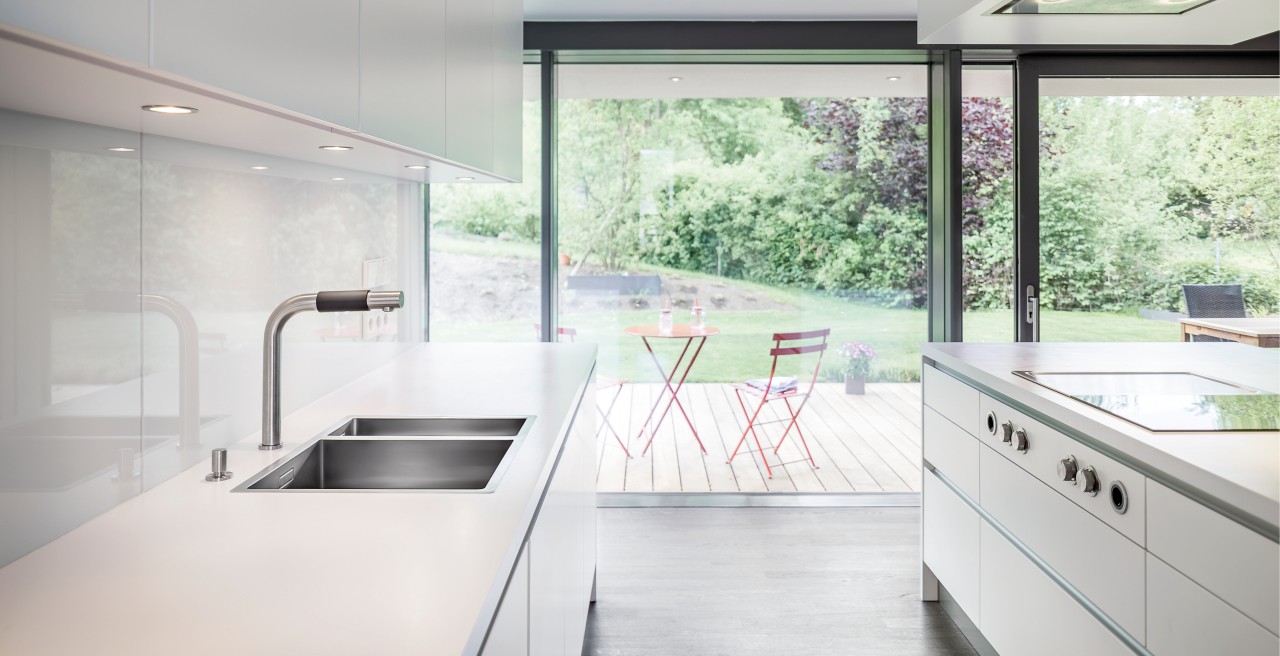1
/
0
Minimalist living meets our needs: when you come home after an eventful day with lots to take in, sometimes you want nothing more than refreshing silence and a blank space. Minimalism leaves you room to think clearly. Above all, your kitchen should be somewhere that everything has its own place, and where you can really switch off. Find out here how you can bring this atmosphere into your own kitchen design.
Minimalism: what we really need
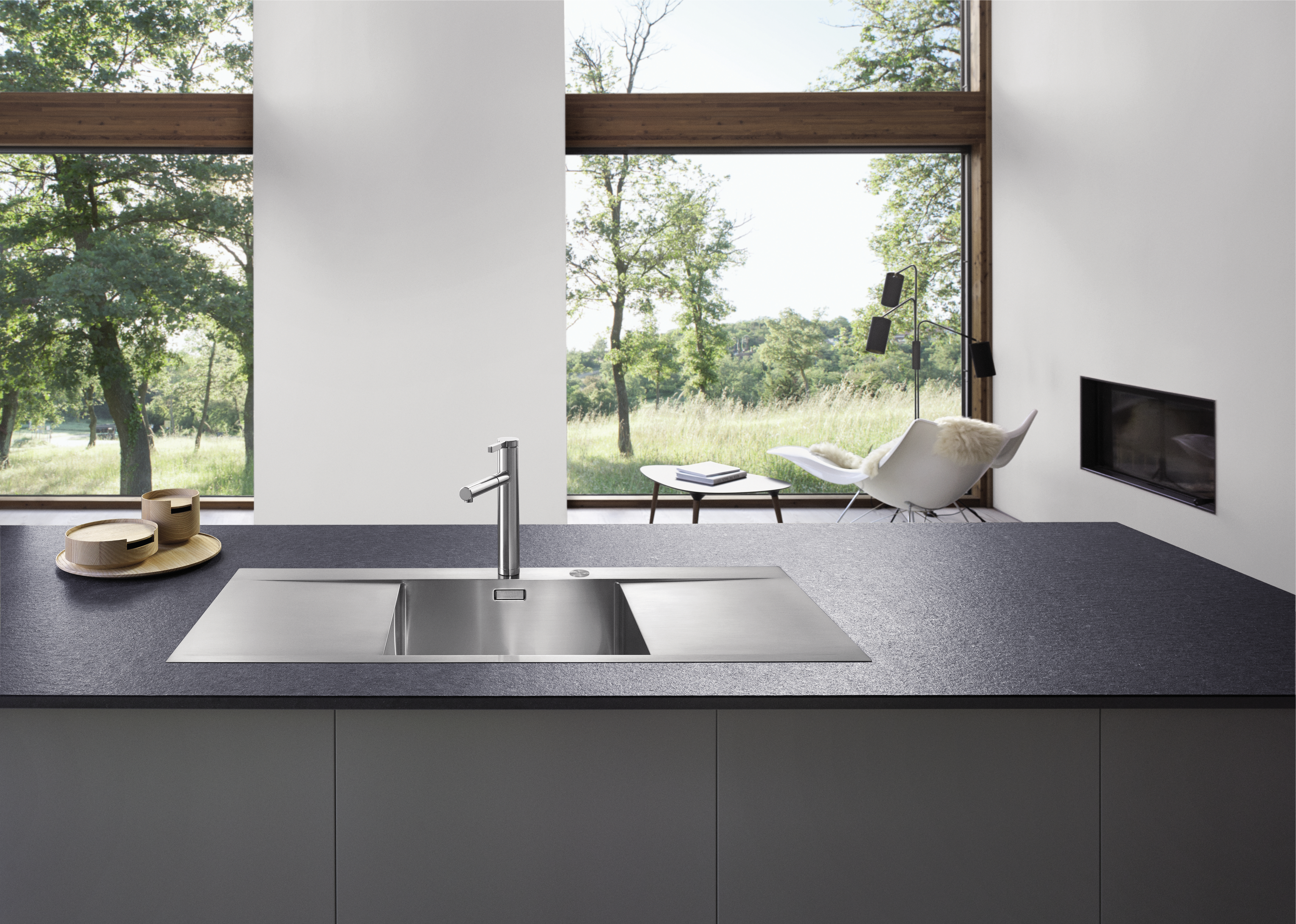
Doing without things to create a good ambience at home
Only in the second phase should you set up your living space in a minimalistic style. Every item that you grant a place in your life should have meaning or function. Keep only the number of plates and cups that you need. Give up that unused coffee service that’s gathering dust in the cupboard. Give empty surfaces room to take effect. Introduce a smooth worktop and bold kitchen mixer tap to conjure up a contrast out of perfect tranquillity and create accents with clean style elements. Such interior decoration for kitchens and living spaces creates a restful environment that leaves plenty of space for fresh new experiences. The Japanese have been familiar with this home and living concept for over 1,000 years. The philosophy of wabi-sabi provides the underpinnings for the minimalist movement. A pared-back design and a maximum of blank white surfaces create peace and harmony.
What sets minimalistic living apart
Those who want to live a minimalist lifestyle must learn the art of letting go. You have to withstand the temptation to carry on buying new things immediately after decluttering your home. Take a proactive approach to dealing with each room and trust that everything is exactly where you need it. You are unlikely to miss that third coffee service or the souvenir mug from your last-but-one holiday.
How to bring minimalism to your living space
- Choose furniture with clean lines: cabinet fronts, dining tables and shelves that feature a straight-lined design bring a sense of serenity to a space. Minimalistic furniture is also ideal for creating a comfortable atmosphere.
- Create accents with geometrical shapes: a wallcovering with restrained patterns, lined tablecloths or tea towels with a circular motif loosen up the overall look. But be careful: you don’t want too many little details for a minimalist style.
- Use few colours: minimalism is all about natural shades, white, black, and grey. Bold colours won’t work here.
- Avoid accessories and decoration: a clean interior design means doing without superfluous knick-knacks.
Minimalistic kitchens: Plenty of space for creativity
You can declutter your living space, but creating a minimalistic kitchen represents a whole new challenge. After all, there are so many brilliantly practical kitchen aids and decorative elements that can assist with preparing food and even cooking. As such, you should conduct an inventory: How much of your kitchenware do you use? Which dishes actually end up on the table? And do you really need those culinary-themed artworks above the worktop? Many kitchens contain objects that never get used. They rob you of space and distract you from what is essential. The solution: clear out your kitchen, leaving only the items that you actively use. These can be stored in a few well-sorted cabinets. Stick to the essentials when it comes to your kitchen fittings, too: for cooking, you only need an oven, a refrigerator, worktops and a sink.
Minimalistic kitchen ideas
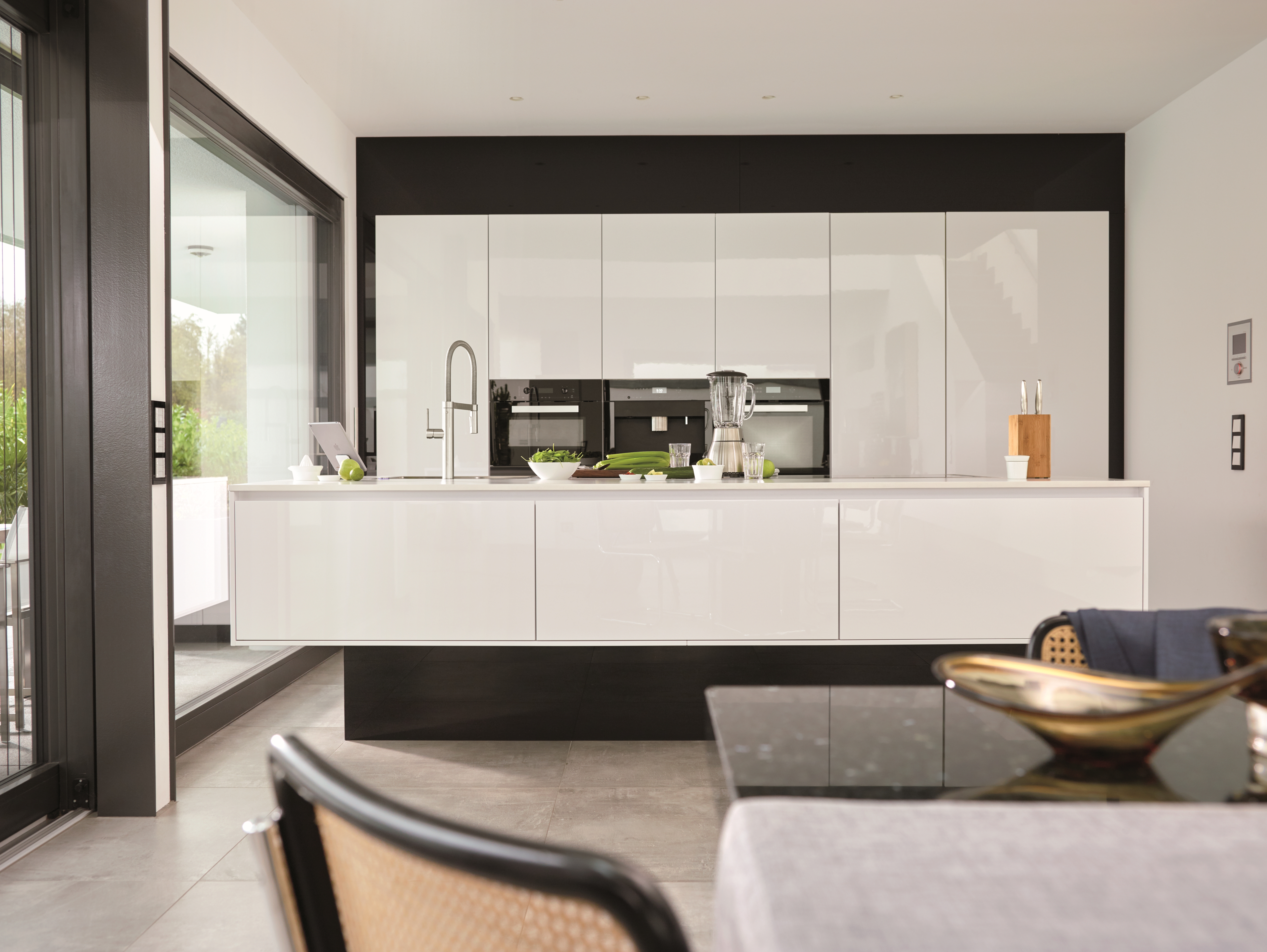
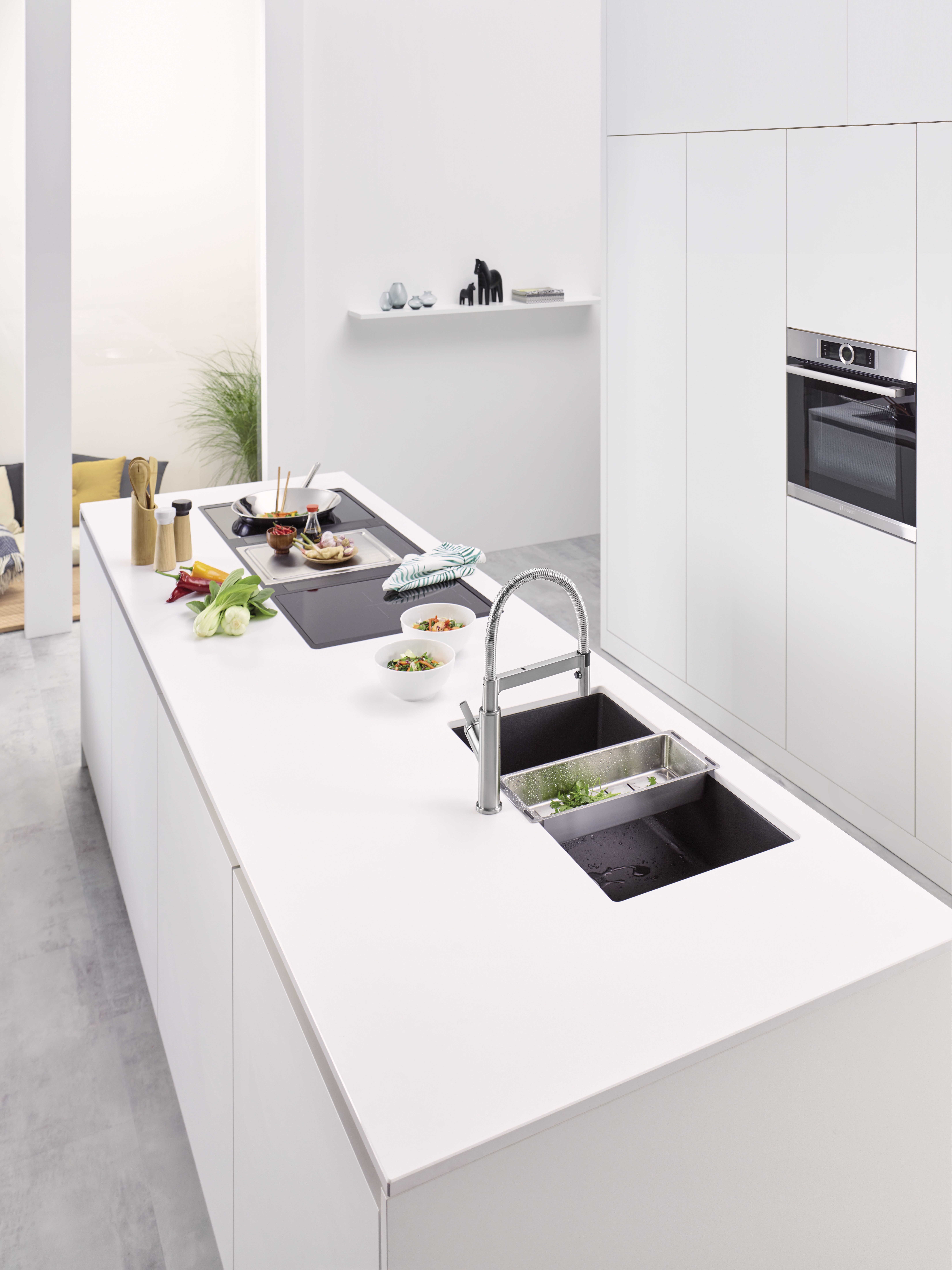
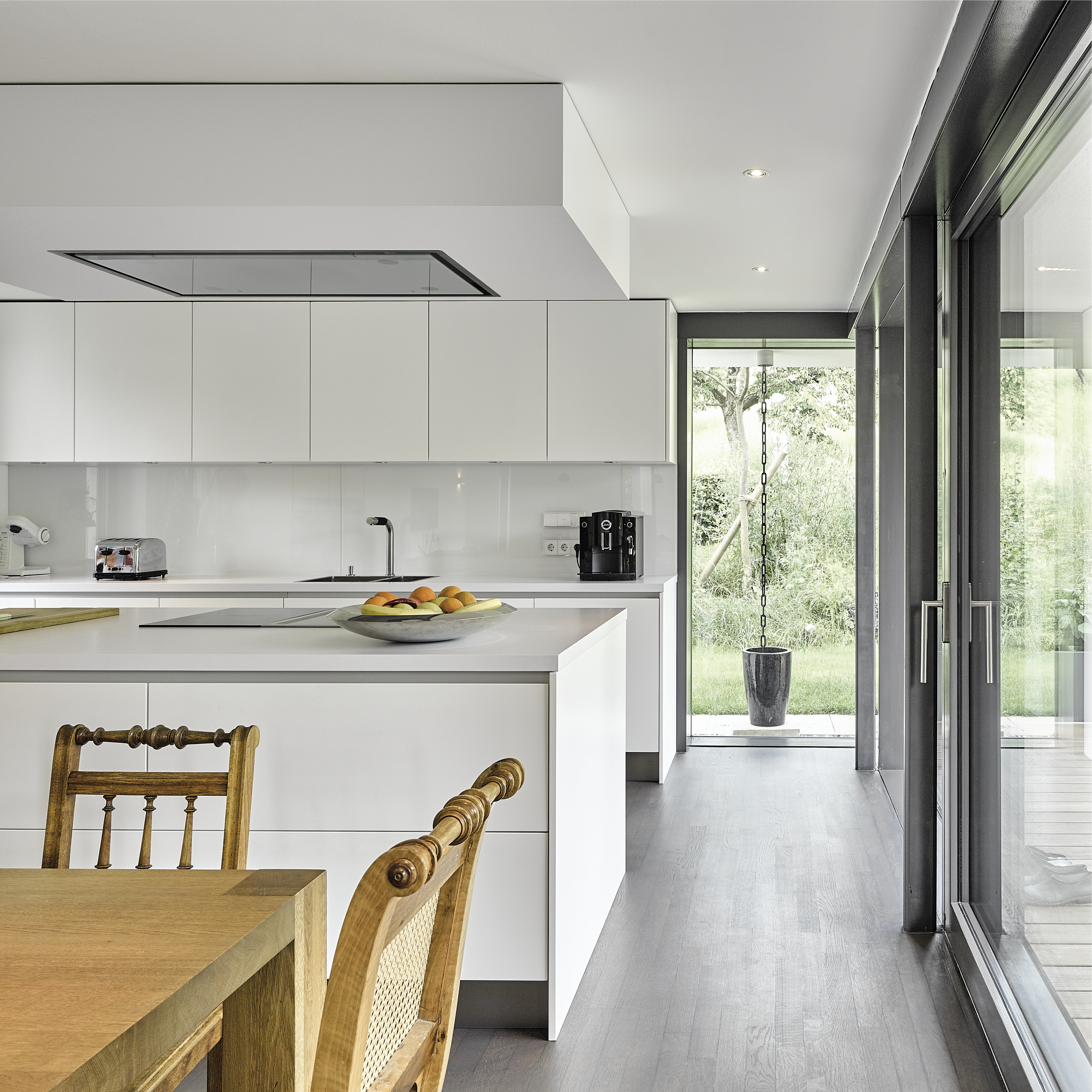
Timeless classic designs for a sustainable kitchen
When designing your kitchen, go for high-quality appliances and accessories. In the interests of sustainability, you want to be able to go on using them for a long time. If you find yourself wondering whether to purchase a particular kitchen appliance, ask yourself whether you really need it. Are you really going to bake enough of your own bread to justify buying a breadmaking machine? Every appliance takes up space. In a minimalistic kitchen, however, you should keep all of your worktops as uncluttered as possible. Less is more in this case. This allows you to showcase the materials to best effect.
Minimalistic kitchen design is defined by
- The choice of sustainable materials:Worktops and kitchen cabinets may come in solid wood, concrete or granite. Natural colours and textures that give the room a sense of tranquillity are also important.
- Make sure your kitchen is highly functional:Living in a minimalist style also means focusing on the essentials. This also means using an important space like the kitchen sink in a multifunctional way.
- Limit your crockery to classic designs: plates, cups and drinking glasses in the latest colours will soon lose their appeal. Opt for classic shapes and subtle colours that are always pleasing to the eye.
Minimalistic kitchen style: sinks and worktops cast from a single mould
Steer clear of unnecessary accessories and limit yourself to the essential kitchen functions. Modern galley kitchens or kitchen islands tend to come in a single colour. The cabinets open with a push-to-open function, such as BLANCO SELECT AutoMove Push-to-open for opening the waste collector in the base cabinet with ease. As such, handles or knobs are no longer required, and the smooth surfaces remain unbroken.
Minimalism foregoes bold colours and twee contrasts, opting instead for large expanses of muted colour. The sink and worktop combination appear to flow seamlessly into one another. You can achieve this effect with a white granite sink, installed in a similarly white granite worktop. Flushmount sinks come without visible edges, so that any crumbs left on the worktop can simply be swept into the sink. If the sink and worktop are the same colour, flush installation gives them the appearance of a single unit.
How to work and cook with a minimalistic sink

